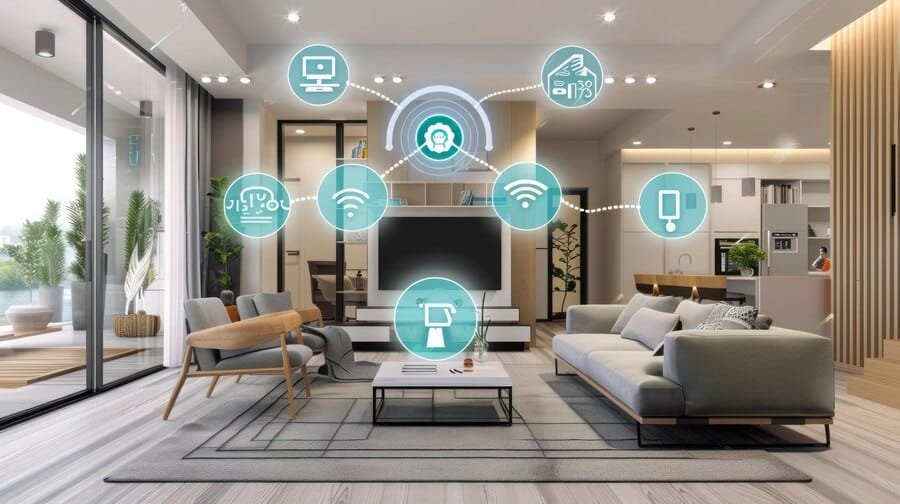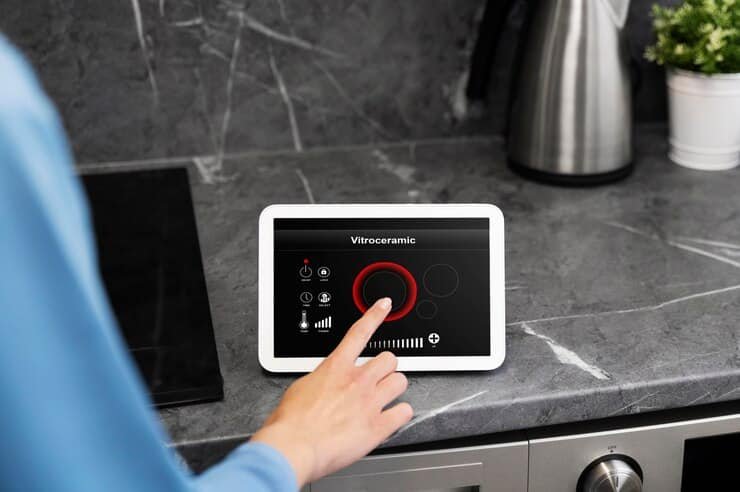Smart Home Security Systems: Protecting Your Home with Technology
In an era where technology is an integral part of our daily lives, home security systems have evolved dramatically. Gone are the days of traditional locks and manual security measures; today, smart home security systems offer homeowners an unprecedented level of control and safety. This comprehensive article will delve into smart home security systems, exploring their features, benefits, and how they can protect your home.
Understanding Smart Home Security Systems
What Are Smart Home Security Systems?
Smart home security systems are advanced security solutions that utilize internet-connected devices to enhance the safety of your home. These systems can include:
- Cameras: Indoor and outdoor cameras that provide real-time video surveillance.
- Sensors: Motion detectors, door/window sensors, and glass break sensors that alert you to unauthorized entry.
- Smart Locks: Keyless entry systems that allow you to control access to your home remotely.
- Alarm Systems: Systems that notify you and emergency services in case of a security breach.
- Home Automation: Integration with smart home devices such as lights, thermostats, and voice assistants.
How Do They Work?
Smart home security systems work through a central hub or app that connects various devices via Wi-Fi. When a sensor detects movement or a door is opened, it sends a signal to the hub, which can then notify the homeowner through a mobile app. Users can also monitor their homes in real time via security cameras and receive alerts on their smartphones.
Benefits of Smart Home Security Systems

1. Enhanced Security
The primary benefit of smart home security systems is enhanced security. With features such as real-time monitoring, motion detection, and remote access, homeowners can keep an eye on their property from anywhere in the world. Whether you’re at work, on vacation, or just out running errands, smart security systems offer peace of mind.
2. Remote Monitoring and Control
Many smart home security systems provide mobile apps that allow users to monitor their home from their smartphones. This capability includes live video feeds from security cameras, real-time alerts for unusual activity, and the ability to lock or unlock doors remotely.
3. Automation and Integration
Smart home security systems can integrate with other smart devices in your home. For example, when a motion sensor detects movement, it can trigger outdoor lights to turn on, deterring potential intruders. Additionally, you can set routines, such as locking the doors and turning off lights at bedtime.
4. Cost-Effective
While the initial investment in a smart security system may be higher than traditional systems, they can save you money in the long run. Many insurance companies offer discounts on home insurance premiums for homes equipped with monitored security systems. Moreover, the reduction in theft and damage can lead to significant savings over time.
5. Customization
Smart home security systems are highly customizable. Homeowners can choose which devices they want to install based on their specific needs. Whether you live in a small apartment or a large house, there are solutions available to fit your security requirements.
6. Increased Property Value
Investing in smart home security can increase the overall value of your property. Many homebuyers look for homes equipped with modern security systems, making your home more appealing on the market.
Types of Smart Home Security Devices

1. Smart Cameras
Smart cameras are essential components of smart home security systems. They come in various forms, including indoor, outdoor, and doorbell cameras.
- Indoor Cameras: Used to monitor activity inside the home. They often feature two-way audio, allowing homeowners to communicate with pets or family members remotely.
- Outdoor Cameras: Designed to withstand the elements and monitor the exterior of the home. These cameras typically have night vision capabilities and motion detection.
- Video Doorbells: Allow homeowners to see who is at the door before opening it. They can record video and send alerts when someone approaches.
2. Smart Locks
Smart locks provide keyless entry options, allowing homeowners to lock or unlock doors using their smartphones. Some models offer features like temporary access codes for guests, tracking who enters and exits, and remote locking/unlocking.
3. Motion Sensors
Motion sensors detect movement in and around the home. When triggered, they can send alerts to the homeowner or activate other devices, such as cameras or alarms.
4. Alarm Systems
Smart alarm systems provide audible alerts in case of a security breach. They can be integrated with monitoring services that notify law enforcement if an alarm is triggered.
5. Smart Lighting
Smart lighting can enhance security by allowing homeowners to control their lights remotely. For instance, lights can be programmed to turn on and off at specific times, giving the appearance that someone is home.
6. Smart Home Hubs
A smart home hub serves as the central control point for all smart devices. It allows homeowners to manage their security system and other smart home devices from one location, typically through a mobile app.
How to Choose the Right Smart Home Security System

1. Assess Your Security Needs
Before selecting a smart home security system, evaluate your specific needs. Consider factors such as the size of your home, the number of entry points, and any potential vulnerabilities.
2. Research Different Brands and Models
There are numerous brands and models of smart home security systems available. Research different options, read reviews, and compare features to find the best fit for your needs.
3. Consider Integration with Other Smart Devices
If you already have smart devices in your home, ensure that your chosen security system can integrate with them. This allows for seamless automation and control.
4. Check for Professional Monitoring Options
Some smart home security systems offer professional monitoring services, which can provide an additional layer of security. Research the options available and choose a plan that fits your budget.
5. Evaluate Installation Options
Consider whether you prefer a DIY installation or professional installation. Many systems are designed for easy self-installation, while others may require professional help.
6. Review the Warranty and Customer Support
Check the warranty and customer support options provided by the manufacturer. A solid warranty and responsive customer service can be valuable if any issues arise.
Installing Your Smart Home Security System
Step 1: Plan Your System Layout
Before installation, plan where you want to place cameras, sensors, and locks. Ensure that each device covers key areas of your home.
Step 2: Follow Manufacturer Instructions
Follow the installation instructions provided by the manufacturer. Most systems come with user-friendly guides that make installation straightforward.
Step 3: Connect to Wi-Fi
Ensure that your devices are connected to your home Wi-Fi network. A strong Wi-Fi signal is crucial for the functionality of your smart security system.
Step 4: Configure Settings
Use the accompanying mobile app to configure your system settings. This includes setting up alerts, schedules, and integration with other smart devices.
Step 5: Test the System
Once everything is installed, conduct a test of your system. Ensure that all devices are functioning correctly and that alerts are being sent to your smartphone.
Best Practices for Maintaining Your Smart Home Security System
1. Regularly Update Software
Keep your smart security system’s software up to date to protect against vulnerabilities. Manufacturers often release updates that enhance security and add new features.
2. Change Passwords Frequently
Use strong passwords for your devices and accounts, and change them regularly. This adds an extra layer of protection against unauthorized access.
3. Monitor System Activity
Regularly check the activity logs on your system to ensure there are no unauthorized attempts to access your home. Many systems provide logs that track when devices were triggered.
4. Test Devices Periodically
Conduct periodic tests of your security devices to ensure they are functioning correctly. This includes checking batteries in sensors and ensuring cameras are capturing clear images.
5. Educate Your Family
Ensure that all members of your household understand how the security system works. This includes how to use mobile apps, set alarms, and respond to alerts.
The Future of Smart Home Security Systems
1. Artificial Intelligence and Machine Learning
The integration of artificial intelligence (AI) and machine learning is set to revolutionize smart home security systems. These technologies can enhance threat detection, enabling systems to differentiate between normal and suspicious activity.
2. Increased Integration with Smart Home Ecosystems
As more devices become smart, security systems will increasingly integrate with other home automation systems. This will lead to more seamless and coordinated security solutions.
3. Enhanced User Experience
Future smart home security systems are likely to focus on user experience, with more intuitive apps and interfaces that make it easier for homeowners to monitor and control their security.
4. Greater Focus on Privacy
As concerns about privacy grow, smart home security systems will need to address these issues by providing more robust data protection and transparent privacy policies.
Also Read : Best Patio Design Ideas To Transform Your Outdoor Space
Conclusion
Smart home security systems offer an effective way to protect your home and loved ones through advanced technology. With various devices and features available, homeowners can create a customized security solution tailored to their needs. As technology continues to evolve, the future of smart home security systems looks promising, offering even greater protection and convenience.
By understanding the benefits, types, and best practices for maintaining your smart home security system, you can make informed decisions to ensure a safe and secure living environment.
FAQs
1. What is a smart home security system?
A smart home security system is a network of internet-connected devices that work together to enhance the security of your home. This includes cameras, sensors, smart locks, and alarm systems.
2. Can I monitor my home security system remotely?
Yes, most smart home security systems offer mobile apps that allow you to monitor your home in real-time, receive alerts, and control devices remotely.
3. Are smart home security systems easy to install?
Many smart home security systems are designed for easy DIY installation, while others may require professional help. Follow the manufacturer’s instructions for best results.
4. How can I ensure my smart security system is secure?
To keep your smart security system secure, regularly update software, use strong passwords, monitor system activity, and educate all household members on security protocols.
5. What are the benefits of professional monitoring?
Professional monitoring provides an additional layer of security, as trained personnel can respond to alerts and contact emergency services if needed.
6. Do smart home security systems increase home value?
Yes, investing in a smart home security system can increase the overall value of your property and make it more appealing to potential buyers.
7. Can I integrate my smart security system with other smart home devices?
Yes, many smart home security systems can integrate with other smart devices, allowing for seamless automation and control.
8. How do I choose the right smart home security system?
Consider your security needs, research different brands and models, check for integration with other smart devices, and evaluate installation options to find the best fit for your home.
9. Are smart home security systems expensive?
While the initial investment may be higher than traditional systems, smart home security systems can save money in the long run through reduced insurance premiums and enhanced security.
10. What should I do if my smart home security system alerts me of suspicious activity?
If your system alerts you of suspicious activity, assess the situation through your security cameras and contact local authorities if necessary. Follow your established emergency protocols.